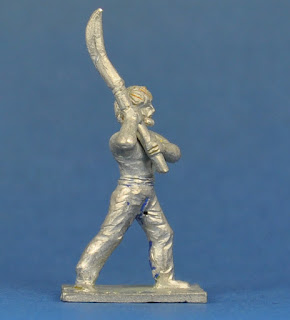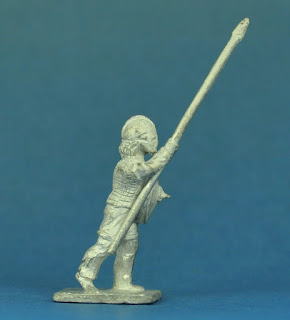Both PB ranges were based on Phil Barker's books Armies of the Macedonian and Punic Wars and The Armies and Enemies of Imperial Rome. This figure is taken from illustration 20 in the first edition of AEIR.
The code numbers for the AEIR range correspond to the illustrations in the book plus '100', i.e. illustration 1 is figure 101, and so on.
The base is stamped PB 120 on the upper surface in the usual manner.
This is an unusual and rather attractive pose for a Minifigs archer. Note the extreme length of the arrow compared to the rather modest length of the quiver!
As with PB 119 this model represents a Syrian or Levantine auxiliary archer and is clearly inspired by depictions of archers on Trajan's column.


















































